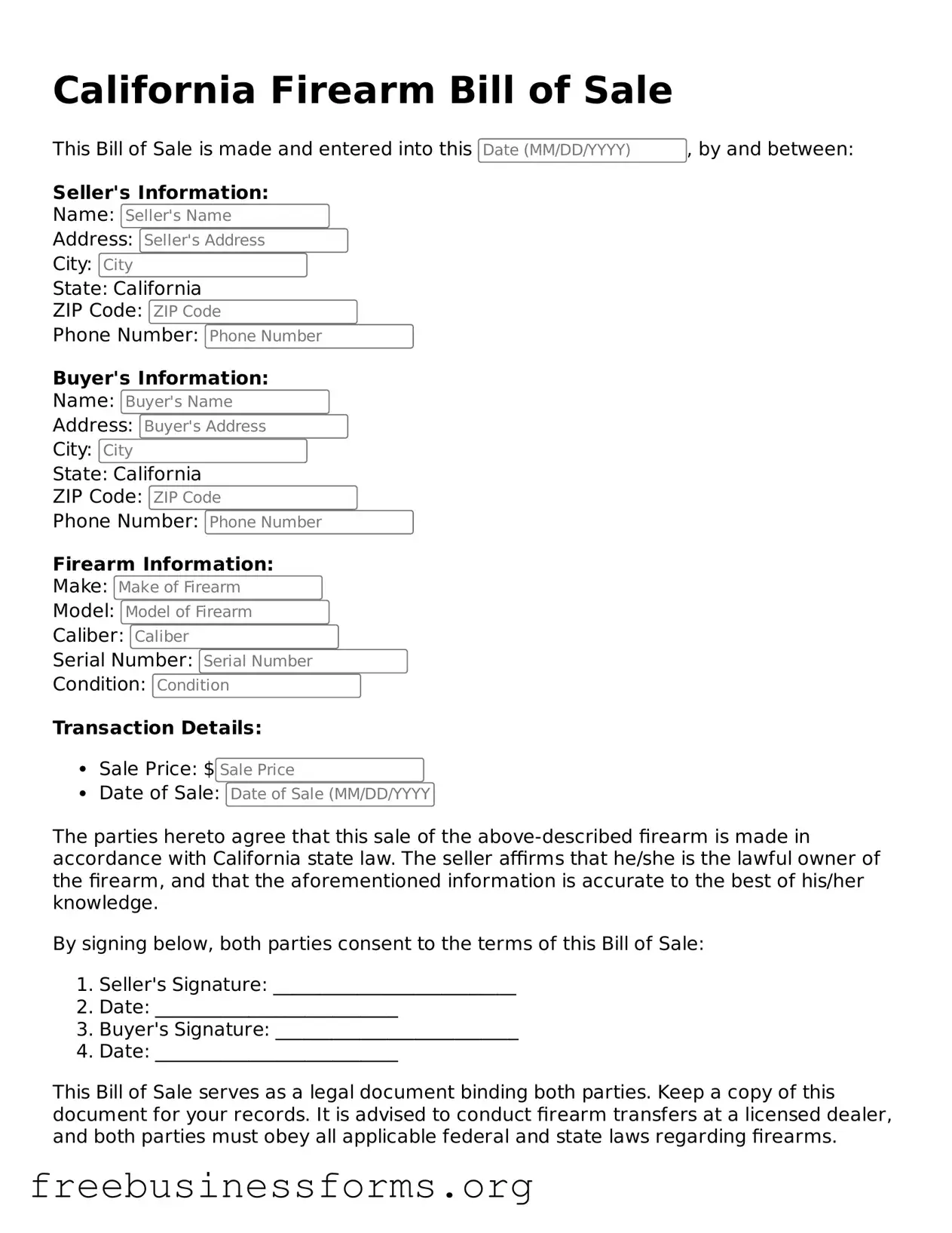Blank Firearm Bill of Sale Template for California
The California Firearm Bill of Sale form is a legal document used to record the sale and transfer of firearms between individuals in California. This form ensures that both the buyer and seller have a clear record of the transaction, helping to protect their rights and responsibilities. Understanding this form is essential for anyone involved in the buying or selling of firearms in the state.
Open Form Here
